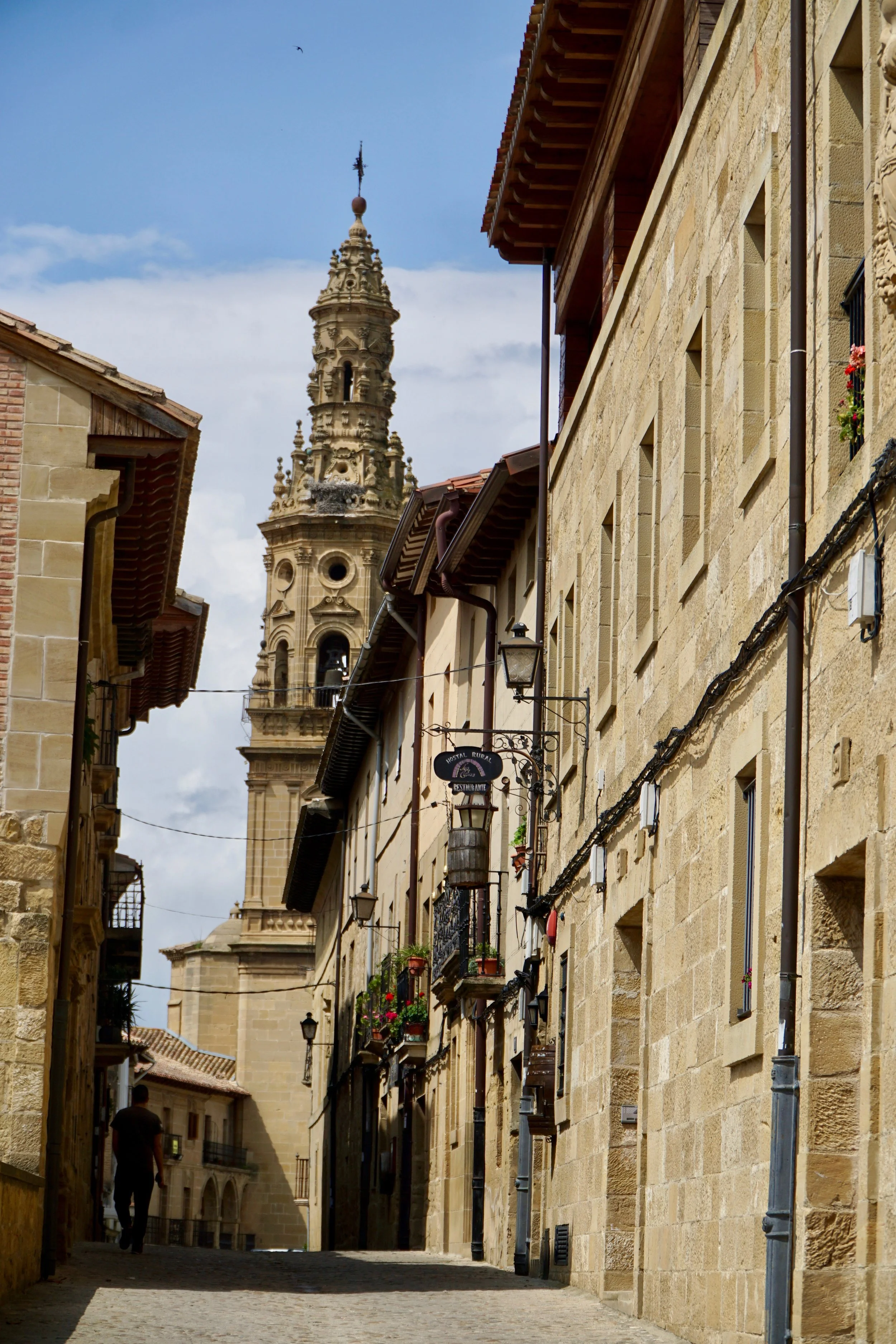RIOJAN VILLAGES
La Rioja is almost more of a viticultural concept, an alcoholic sliver of history, than simply a mere region; the smallest of Spain’s 17. Much like Bordeaux, Napa Valley, Chianti, the word Rioja precedes the place itself and instead implants in the mind an idea of wine, a clear image of bottles of red, usually Tempranillo. But then the images fades and we are once again just left with the words La and Rioja.
I had been to this region many times and driving through the lonely roads many of the names rang familiar: Navarette, Nájera, Santo Domingo de la Calzada, the echoes of the pilgrims’ shoes on the Way of St James; San Millán, the great monastery where the Spanish language was born; Laguardia, Elciego, Haro, wine towns that sometimes fell into the Basque Country. But there was always more to see. Always another town. Always another glass of wine.
On a brilliantly clear day, when the mid-morning sun made the stony Spanish cliffs simmer in a blue haze and the rapeseed fields shone to blind, we picked up a quiet road and cleaved through the middle of vineyards. Samaniego, held a lovey position wedged between the Sierra del Toloño and the meadowlands that contained nothing but vine.
Then came San Vicente de la Sonsierra; a village that appeared, muscular and be-castled, visible from every corner of the wide valley floor. Its cluster of warm honey-coloured streets were stuffed with Riojans preparing the local fiestas. Bunting fluttered in the hairdryer wind and little old ladies sat in local dress on white plastic chairs.
Like some shambolic Mont Saint-Michel, the mound is crowned with a prim and bulky church - Santa María la Mayor - and the open ruins of a 12th century military castle. The result is a menagerie of spires and towers. Joining the church are the San Juan de Arriba chapel and the clocktower. Almost more impressive were the views out. Always with the views in this country…
Briones came as a surprise. A diminutive little syrup-walled village coiled up a hillock, it was far prettier and more palatial than one would expect from the outside. Less than 1000 people lived there, but it looked important and prim inside the old town. Named after the ancient Riojans, the Berones, Briones sported a very fine church. Nuestra Señora de la Asunción stood tall and filigreed in the Isabelline Gothic style.
The main square, from which the cobbles streets teetered out, was a mix of iron balconies, galleries, opulent state buildings and almost-abode timber and rock houses that could have fallen out of the Middle Ages. We didn’t linger long, but I could imagine drinking wine there and just writing for days.
The last village was a place I had always wanted to see; a place to fulfil an academic, read geeky, obsession. A couple of years ago I wrote a book about the Camino de Santiago. I spent 51 days walking through Spain and loved every single second of it. The route took me through various regions, through a mass of the country’s history and culture and also some of its most indicative landscapes. But the route didn’t pass through Clavijo, the lonely village where Spain’s patron saint sounded his heavenly battle cry.
"To a serious historian, the existence of the Battle of Clavijo is not even a topic of discussion." A great mythical skirmish that never happened. Some amazing medieval marketing; a religious zeal-ridden publicity campaign that was believed for centuries. In 844 Ramiro I of Asturias was fighting the Muslims in the rough hills and losing. St James then arrived in a blinding light atop a massive horse wielding a huge sword. This swung the tide and the Christians won. Nonsense of course. But it stuck. And Clavijo was chosen as the location.
In reality what you have is a tiny and endearing little village with only a couple of hundred people living there. The last stop on the ascending road before the sierra begins. It sits, swept up on a bluff like a crashed wave frozen in rock. The remains of the castle line the high point, open-mawed like a reptilian jaw. The church, squat and blocky, takes a backseat to the natural drama, and the scruffy houses look out north to the patchwork quilt of the valley and south to peaks and ridges and nothing else.
Santiago was likely never here, but I was glad I had made the trip. It provided, regardless of how circular my northeast route had been - through green fishing villages, hill-swallowed Basque towns, dead settlement and lonely monasteries, a fitting and apt end to my trip.









